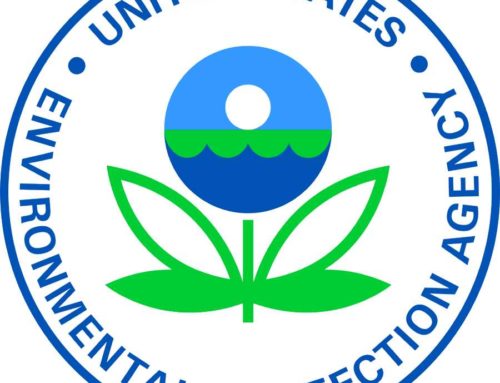So by now we’ve recognized that your “friend” from the government isn’t really interested in helping you per se, but forcing you to become compliant with law and regulations. They have turned their observations at your facility over to the enforcement group. That is what their initial letter may say – it will have a list of things that were observed at your facility, the regulatory citation that provides evidence that this is not acceptable practice and a comment that your facility has been “turned over to enforcement”.
What does this mean? What will happen next? When will it happen? All valid questions and not easily predicted without a bit of historical reference.
In my experience with regulators particularly in Kentucky and Indiana, the Inspection Deficiency Letter may have some initial response or correction requirements within a fairly short timetable (14-30 days) but even when you believe you’ve responded to the inspector and resolved their issues, it doesn’t mean that the Enforcement Team will be called off. Eau Contrare…. The Enforcement Team has been mobilized…. They just aren’t especially quick to mobilize.
So you’ve resolved the inspector’s issue the week after they were at your facility and as far as you’re concerned, it’s a done deal. Not so. Five-six months from now you very well may receive a letter from the Enforcement Branch. This group has legal counsel on the team and so things are looked at from a legal perspective against the regulations and a fine is calculated before your letter comes in the mail. Be prepared, it very well may come with a Proposed Consent Decree and a proposed fine. Do not over-react. This is the initial volley in a fairly lengthy negotiation stage.
You are not necessarily going to have to admit guilt in anything or pay the fine they have proposed. In many cases, the inspector’s information was skewed, or had some additional factors that were not considered when the compliance issue was identified. Often, I’ve found that the inspectors have a knack for showing up with the normal person handling regulatory issues is out of the office. So while the person tasked with showing him/her around may not have known where certain records were, it doesn’t mean that they weren’t retained properly. There are plenty of circumstances where additional information and proof that what the inspector observed was not as it appeared is totally acceptable in the response phase.
Since the time I started writing about this blog topic, I’ve had another client with these issues call me. I’ll tell you what I told them – we need to go through the issues identified in writing and find the ones that are blatantly true. Then we look at the rest – which are partially true? Which are totally false?
Frankly, the ones which are blatantly true are in fact the easiest to deal with. We don’t have much of anything to prove as far as our history. What we will need to do it devise a plan to keep it from happening again. One of the best and most effective ways of managing these types of compliance issues is to take the approach adopted by those companies who are certified to the ISO 14001:2004 standard for environmental management systems – conduct a robust and truthful root cause analysis. You don’t have to be certified to ISO 14001 to utilize the process. You can use it regardless of your certification status. I recommend that you write up the Corrective Action Plans and submit them to the Enforcement Team as part of your reply.
To help in the demonstration process, I will use a hypothetical issue that a regulator might have cited as a compliance issue and walk you through the process. So in my fictitious example, the regulator cited my company for not managing hazardous waste properly. They cited that we didn’t have current waste profile, weren’t labeling our waste as hazardous waste and had no shipping paper records.
Step 1: Identify the problem clearly.
Sometimes you can cut & past this straight from the regulatory agency report. This sounds overly simple but if we aren’t clear on the issue, we need to talk to the inspector or the enforcement team and get clarification. This is our right – to know exactly what the issue is.
Example – In our case, we didn’t have hazardous waste approved for disposal with an authorized vendor. We didn’t have it labeled as hazardous waste and we couldn’t find evidence that we’d shipped this waste in the paper on a Hazardous Waste Manifest.
Step 2: Conduct Root Cause Analysis (RCA).
I recommend at minimum using a 5-Why process. Some organizations like using an 8D or more complex RCA method but for most environmental issues, I find 5-Why does a sufficient job.
- Why did we not have profiles or labels or shipping papers? No one at the company was aware that this waste had special rules or that it was considered hazardous.
- Why was no one aware of the status of this waste? No one at the facility is knowledgeable about environmental regulations.
- Why is no one knowledgeable about environmental regulations? We haven’t had an environmental manager at the company for the past 2 years.
- Why have we not had an environmental manager at the company for 2 years? We were losing business and were struggling to survive.
- Why were we losing business and struggling to survive? The economy went down and we lost 50% of our clients.
Which of these answers is specific to the issue and one which we can actually control? #2-3 are actually root causes which help us to do something to prevent this issue from recurring. While the other issues may have caused items 1-3, we can’t really control issues 4-5.
Next we will focus on interim corrective actions. This is the “stop the bleeding” planning phase. What can we do pretty quickly that will keep the problem from getting worse? In my example, I have chosen to hire a consultant to come in and show us the proper ways of managing hazardous waste.
In my long-term corrective action stage, I may decide to have several staff trained to become our in-house experts. I don’t want just one person being the only knowledgeable party to head off problems should a person leave the company in the future. The long-term corrective action may take several months or even a year for larger projects.
The next stage is the verification stage. This is where we stand back and look at our actions and see if they created the outcome we desire. Verification is not simply looking to see if we’ve checked the box that all the planned activities were completed. It is looking at the list of activities, seeing that they are completed, allowing sufficient time for the actions to become effective and then reviewing the outcome to see if in fact it is effective.
So in my example, I will hire my consultant to come back to the facility 6 months after my staff have been trained to manage waste in-house and verify that they are adhering to all the rules and understand them.






